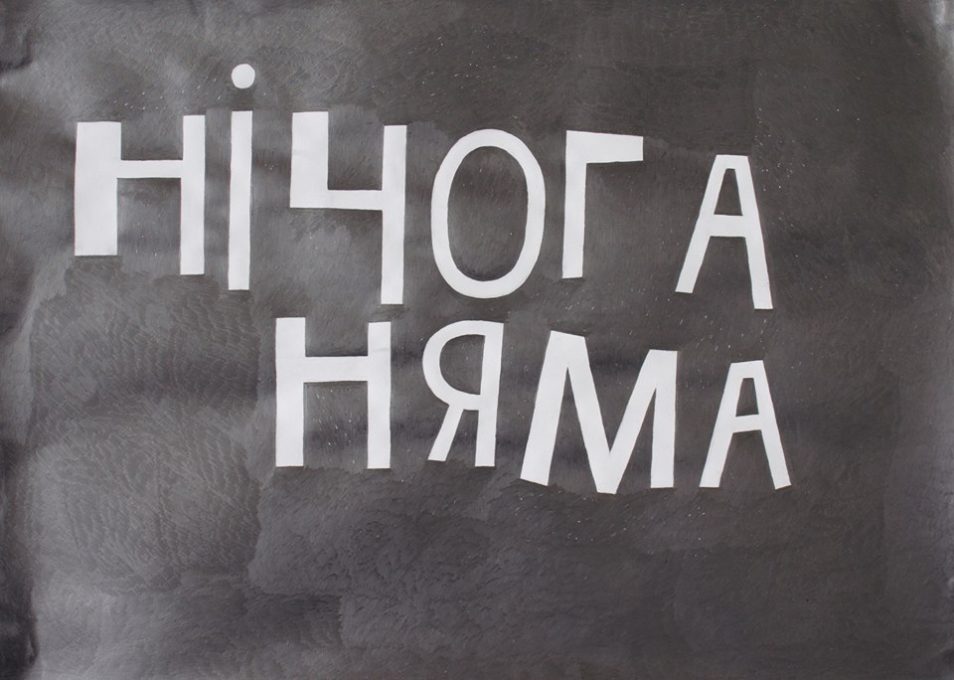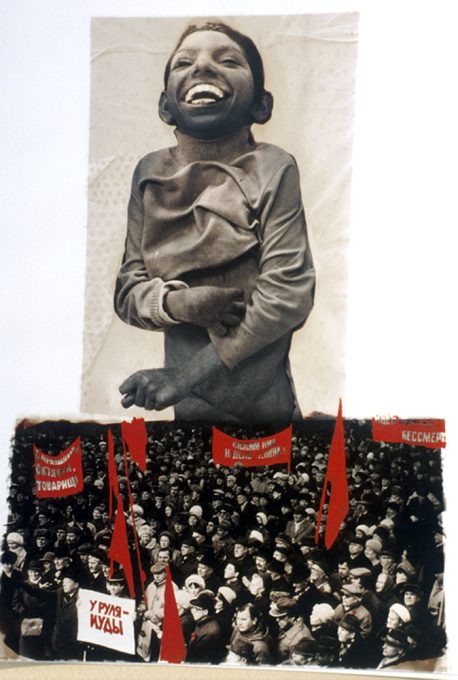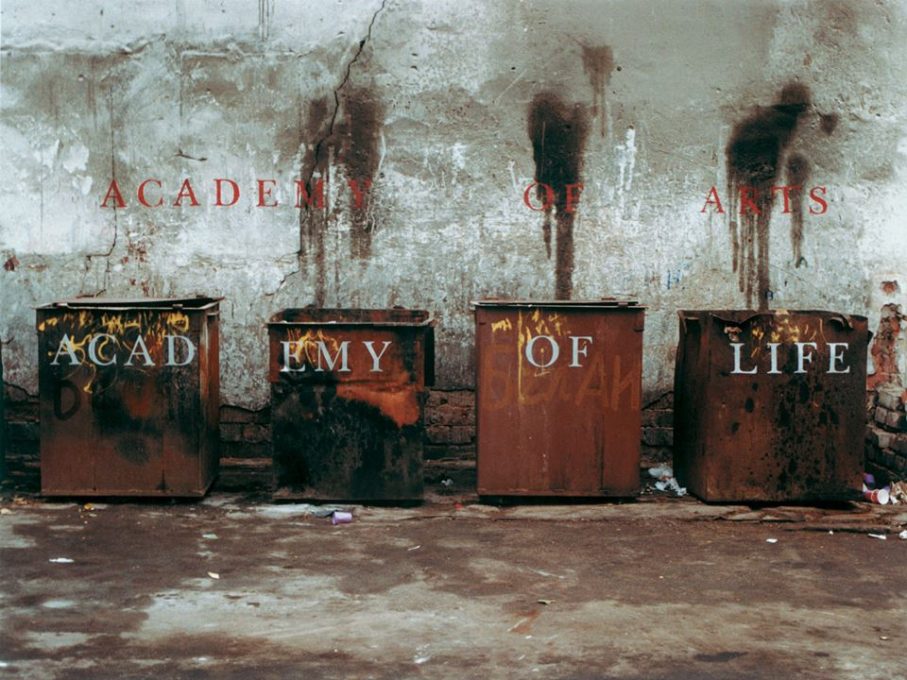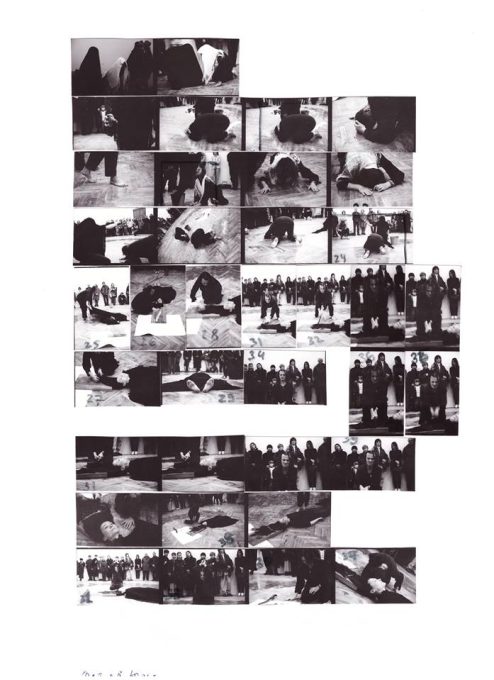COLLECTION (ZBOR). Constructing an archive
Exhibition of Belarusian art within the framework of The East of Culture / Another Dimension Festival
The exhibition entitled “COLLECTION (ZBOR). Constructing an archive” documents the forty most essential artistic statements in the contemporary art of Belarus in the years 1991–2015. It could be organized and exhibited owing to materials collected by the KALEKTAR Belarusian contemporary art research platform (kalektar.org) for the special project ZBOR (zbor.kalektar.org) established by the platform. ZBOR is an online constantly expanded and updated information resource pertaining to the oeuvres of the leading Belarusian artists from the 1980s until the present day. The data resource is intended to function as a universal base for further, more detailed research in this area. The exhibition has been conceived as a special, widely available handbook of Belarusian art of the recent decades. Its creators are firmly hoping that debates accompanying its presentation will further the reflection concerning the significance of art, art protection procedures, and the process of developing an art collection. As a result, they wish to develop a project that is unique in Eastern Europe: a detailed, professional information resource pertaining to the most essential artistic statements recently presented by Belarusian artists. Being one of the key Polish cultural institutions programmatically interested in the contemporary art of Belarus, the Arsenal Gallery in Białystok has been proposed to host the exhibition.
Outline of the problem
The cultural policy of contemporary Belarus is centralised; it is controlled and financed by the state. The art research, criticism, collecting and museum management depend almost entirely on state funding and follow the established ideological programme. Currently, Belarus has five large state-owned collections concerned with the country’s contemporary art. These collections are chaotic and propagandist, however; in addition, due to the ruling ideology and the preferences of their managers, many noteworthy figures, phenomena and works are ignored. Consequently, Belarus does not have a single professionally created, constantly available public collection that would be representative of all the currents in the country’s most recent art, and information regarding essential tendencies and phenomena is vanishing.
In the recent decades, Belarusian art has been undergoing various transformations. These years witnessed many important actions by artists and art formations, which materially influenced the development of culture. So far, however, diverse circles of professionals concerned with art criticism have not developed an integrated appraisal of those phenomena, which resulted in the marginalisation and disappearance of data pertaining to contemporary art created in the recent decades. Initiatives undertaken by both independent and state researchers do not coalesce into a coherent, consistent programme. As a result, the ensuing scholarship is random and incidental, and a picture of Belarusian contemporary art that would be full, objective and firmly based on scholarly methodology has still not been obtained. In addition, the cases of reciprocal influences between the Belarusian and foreign contemporary art, and their impact on the oeuvres of Belarusian artists, have hitherto not been recognised or researched.
Firstly, state collections in Belarus contain virtually no art that would be independent, not bowing to the official ideological programme; secondly, views critical of the state policy and officially supported culture get entirely ignored. In stark contrast to other countries, there are no educational programmes, catalogues or collections that would take note of the key events, figures, works and tendencies in Belarusian art. State-sponsored research on works of art encompass the period ending in the mid-1990s, and this is also reflected in school education programmes. Artistic phenomena dating from the mid-1990s until today are thus excluded from state research; this practically forces independent scholars to focus at the art of this period. Yet the absence of a shared research programme and the independent experts’ varying degree of professional training results in an irretrievable loss of data. It is true that vigorous processes of consolidating the Belarusian artistic milieu and supplementing the research resources have been observed of late, and the necessity of establishing an alternative, non-state museum of contemporary art is noted; yet no significant steps towards creating a social information-and-research base dedicated to Belarusian art of the recent decades have been undertaken.
The creative team
Concept and co-organisation of the exhibition: KALEKTAR Belarusian contemporary art research platform
KALEKTAR was established in 2014 by the Belarusian artists Sergey Kiryuschenko, Sergey Shabohin and Aleksei Borisionok with the mission of collecting and archiving materials, and preserving the continuity of knowledge about the contemporary artof Belarus. In the course of a few years, the initiative has brought together many specialists, acquired a wealth of archive materials and won the support of leading cultural institutions and important partners.
Exhibition curators: Sergey Kiryuschenko, Sergey Shabohin
Sergey Kiryuschenko – co-founder and director of the ZBOR project; one of the leading Belarusian artists, an active member of the art community, author of many publications and originator of initiatives. He is the leader and professional consultant of projects concerning the contemporary artof Belarus.
Sergey Shabohin (shabohin.com) – co-founder and art director of the ZBOR project; an artist, curator, art-activist, founder and editor-in-chief of the Belarusian contemporary art website artaktivist.org, author of analytical essays on the contemporary artof Belarus.
Exhibition coordinator: Pavel Preobrazhensky
Pavel Preobrazhensky is a culture manager, an organiser and co-organiser of several cultural events in Belarusand in Poland, the initiator and manager of the artaktivist.org website.
ZBOR project experts: Tania Arcimović, Aleksei Borisionok, Andrei Dureika, Valentina Kiseleva, Alexey Lunev, Lena Prents
Exhibition partners:
Accompanying events:
29.08.2015, 11.00 – curator’s tour of the exhibition, Galeria Arsenał, ul. A. Mickiewicza 2, Białystok
The exhibition was created as part of a project the Rise of Eastern Culture / Another Dimension
Curators:
Sergey Shabohin, Sergey KiryuschenkoSiarhiej Babareka






